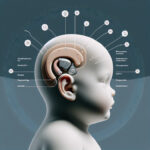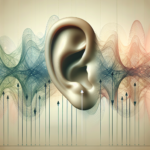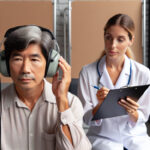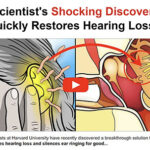Cut Ear Buzzing Using This 3-Second Pinch Method
Infant Hearing Loss Treatment Options: Exploring Traditional and Innovative Methods

Understanding Infant Hearing Loss
Infant hearing loss is a condition that can significantly affect a child's development, making early detection and intervention crucial. The ability to hear is fundamental for effective communication, emotional well-being, and cognitive growth. When hearing impairment goes unnoticed, it can delay speech, language, and social skills. Therefore, newborn hearing screenings are essential to identify any issues as early as possible. These screenings are typically conducted before a newborn leaves the hospital, ensuring any potential problems can be addressed promptly to facilitate the best possible outcomes for affected infants.
There are two primary types of hearing loss in infants: conductive and sensorineural. Conductive hearing loss occurs when sound waves are not effectively transmitted through the outer ear canal to the eardrum and the tiny bones of the middle ear. Sensorineural hearing loss, the more common type, arises from problems in the inner ear or the auditory nerve. Additionally, some infants may experience a combination of both, known as mixed hearing loss. Each type has different causes and treatments, making accurate diagnosis vital.
Potential causes of hearing loss in newborns are varied and can include genetic factors, prenatal infections, complications at birth, and exposure to ototoxic medications. In some cases, the cause remains unknown. It's important to recognize that regardless of the cause, the impact on a child's development is significant, underscoring the need for immediate attention and a tailored infant hearing loss treatment plan.
Traditional Treatment Methods for Infant Hearing Loss
Hearing aids are often the first line of defense in traditional infant hearing loss treatment. These devices are specially designed to fit the unique contour of an infant's ear and amplify sound, allowing the child to experience a broader range of auditory stimuli. It's critical to ensure that these hearing aids are properly fitted and programmed by a pediatric audiologist to match the specific hearing loss profile of the infant.
For more severe cases of hearing loss, cochlear implants may be recommended. These sophisticated devices bypass damaged parts of the ear and directly stimulate the auditory nerve, providing the child with the ability to perceive sound. The decision to proceed with a cochlear implant is complex and involves careful consideration of the infant's hearing loss severity, overall health, and potential for speech and language development.
Assistive listening devices and technologies like FM systems can also play a significant role in managing infant hearing loss. These tools work by reducing background noise and enhancing sound quality, which is particularly beneficial in educational settings. As children grow, their hearing needs can change, so these devices must be adaptable to ensure they remain effective over time.
Medical Interventions and Therapies
In certain cases, medication and surgical procedures can be effective infant hearing loss treatments. For example, if a child's hearing loss is due to fluid buildup in the middle ear (otitis media), a course of antibiotics or the surgical insertion of ear tubes might resolve the issue. However, these approaches are typically for conductive hearing loss and might not be applicable for sensorineural hearing loss.
Genetic therapy holds promise for future treatment of hereditary forms of hearing loss. While still in the experimental phase, the idea is to correct or replace the faulty genes causing the hearing impairment. Despite the potential, there are significant scientific and ethical challenges that must be navigated before such treatments become mainstream.
Early intervention programs are integral to managing infant hearing loss. These programs encompass various services, from medical treatment to educational support, and are designed to help children reach their full potential. They often involve a team of specialists, including pediatric audiologists, speech-language pathologists, and educators, who work together to create a comprehensive care plan.
The Role of Speech and Language Therapy
Auditory-Verbal Therapy (AVT) is a specialized form of speech therapy that aims to maximize a child's residual hearing. By consistently using hearing aids or cochlear implants, AVT encourages auditory learning and listening skills, which can help a child develop spoken language naturally and effectively. Parents and caregivers are actively involved in the process, learning techniques to support their child's progress.
Speech-language pathologists offer invaluable support for children with hearing loss, providing them with strategies to improve communication skills. These professionals assess and treat speech, language, voice, and fluency disorders, tailoring their approach to each child's specific needs. Their involvement is critical in helping children overcome the challenges associated with hearing impairment.
Sign language can be a powerful supplemental tool for children with hearing loss. While some families choose to use sign language exclusively, others use it in conjunction with spoken language. Sign language can provide a visual means of communication, enabling children to express themselves and interact with others, even when they are not wearing their hearing devices.
Innovative Approaches to Infant Hearing Loss Treatment
Bone-Anchored Hearing Systems (BAHS) represent an innovative treatment option for infants with conductive hearing loss or single-sided deafness. These devices transmit sound vibrations directly through the skull bone to the inner ear, bypassing the outer and middle ear. While BAHS are not suitable for all types of hearing loss, they can offer an alternative for children who cannot use traditional hearing aids or cochlear implants.
Stem cell research continues to explore the potential for regenerating damaged cells within the inner ear. The hope is that one day stem cell therapy could restore hearing in individuals with sensorineural hearing loss. While this research is still in the experimental stages, it offers a promising glimpse into the future of infant hearing loss treatment.
Auditory Brainstem Implants (ABI) are devices that provide a sense of sound to individuals who are not candidates for cochlear implants. They are surgically placed onto the brainstem to stimulate hearing pathways directly. Although ABIs are not commonly used for infants, they are a potential option for children with specific types of profound hearing loss.
Parental and Caregiver Support
Educational and counseling services for families are essential components of infant hearing loss treatment. Parents and caregivers must understand the nature of their child's hearing loss and the various treatment options available. Providing this knowledge empowers families to make informed decisions and advocate for their child's needs.
Integrating communication strategies at home is crucial for a child's development. Parents and caregivers can create a language-rich environment by talking to their child, reading aloud, and encouraging the use of hearing devices. Consistent communication helps reinforce the child's auditory skills and language development.
Support groups and community resources offer a network of understanding and information for families navigating infant hearing loss. Connecting with others who have similar experiences can provide emotional support and practical advice, helping parents and caregivers feel less isolated as they manage their child's hearing loss.
Monitoring and Ongoing Care
Regular audiological assessments are vital to ensure that a child with hearing loss is receiving the appropriate level of support. These evaluations help track the child's hearing abilities and the effectiveness of their treatment plan, allowing for adjustments as needed. Staying proactive with these assessments is key to addressing any changes in hearing status promptly.
Pediatric audiologists specialize in the unique needs of children with hearing loss. Their role extends beyond initial diagnosis and treatment; they monitor the child's auditory development and provide guidance on the use and care of hearing devices. These professionals are often the primary point of contact for families seeking advice on managing their child's hearing loss.
Updating and maintaining hearing devices is an ongoing process. As children grow, their ears change shape, and their hearing needs may evolve. Regular check-ups with a pediatric audiologist will ensure that hearing aids or implants are functioning optimally and that any necessary adjustments are made to accommodate the child's development.
Future Directions in Infant Hearing Loss Treatment
Advancements in hearing aid technology continue to offer new possibilities for children with hearing loss. From improved sound quality to wireless connectivity, modern hearing aids are becoming more effective and user-friendly. This progress is essential for ensuring that children with hearing loss can interact seamlessly with their environment.
The potential of gene editing, particularly CRISPR-Cas9, is one of the most exciting frontiers in infant hearing loss treatment. By precisely altering the DNA associated with hearing loss, this technology could eventually lead to a cure for certain genetic forms of hearing impairment. As research progresses, the implications for future treatments are profound.
Global initiatives and awareness campaigns are increasing the visibility of hearing loss and the importance of early detection and treatment. Through public education, advocacy, and policy change, these efforts aim to reduce the incidence of preventable hearing loss and improve access to treatment for affected infants worldwide.

Laura Henderson is a health enthusiast and has been interested in healthy and natural methods of eliminating tinnitus and restoring natural hearing for many years.











